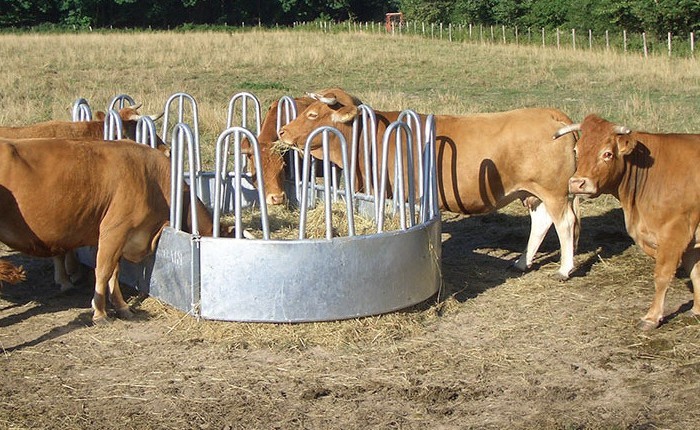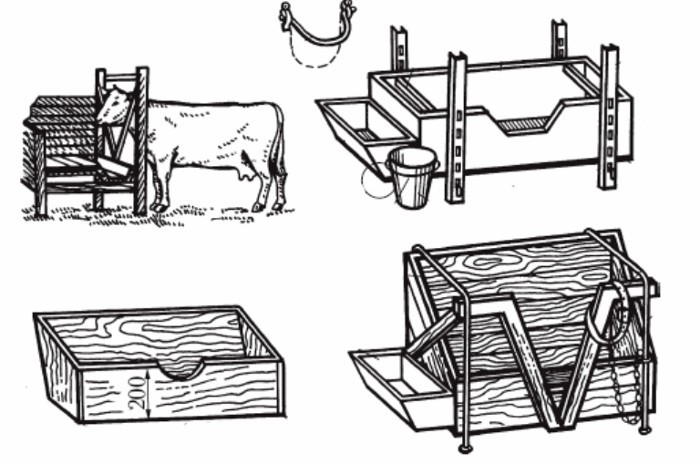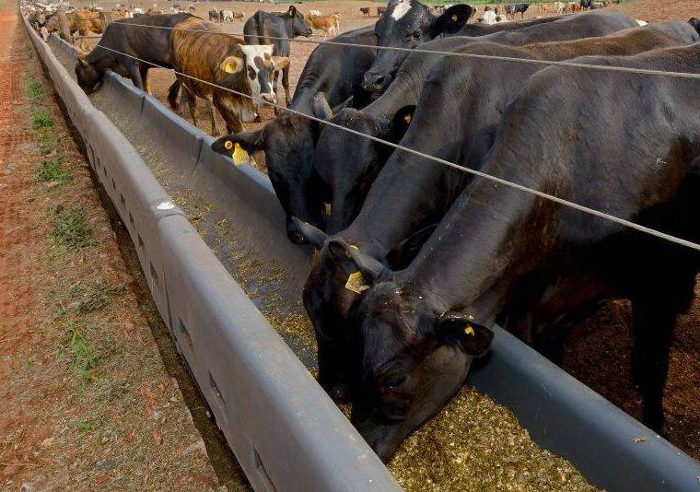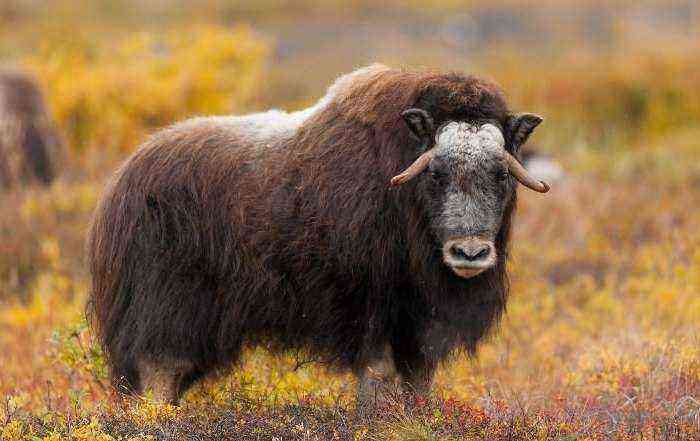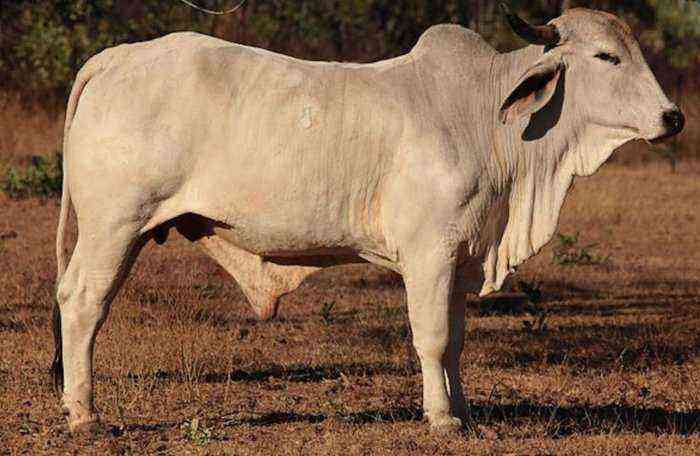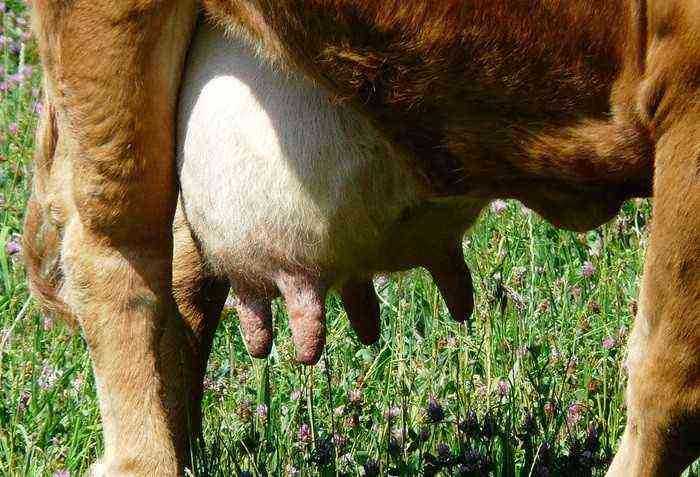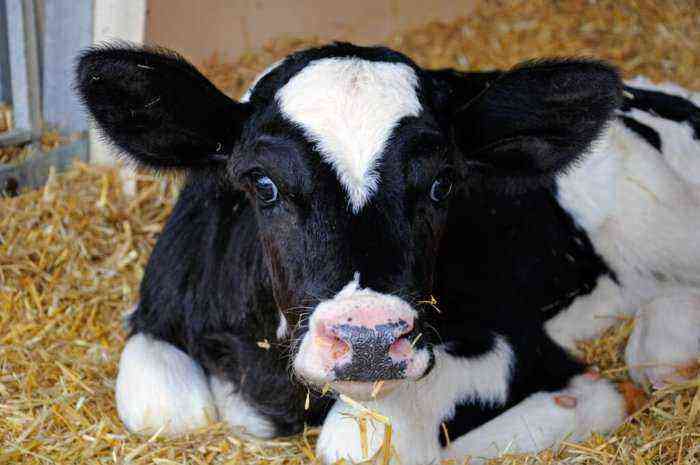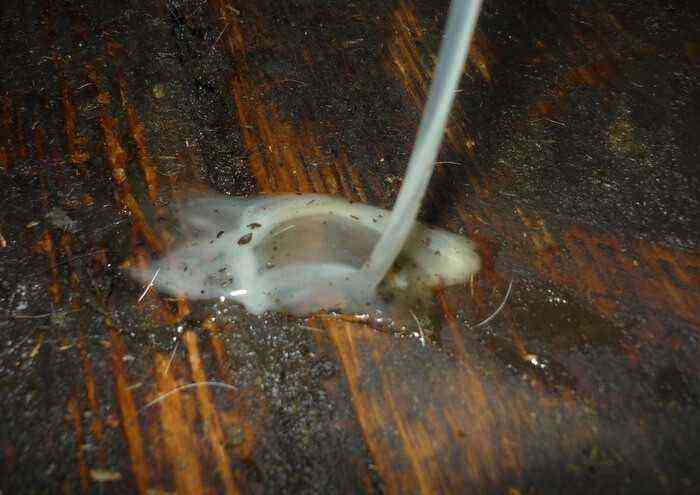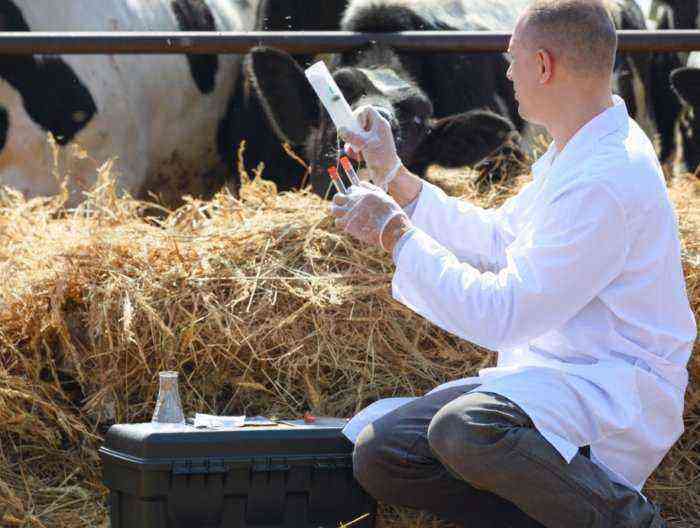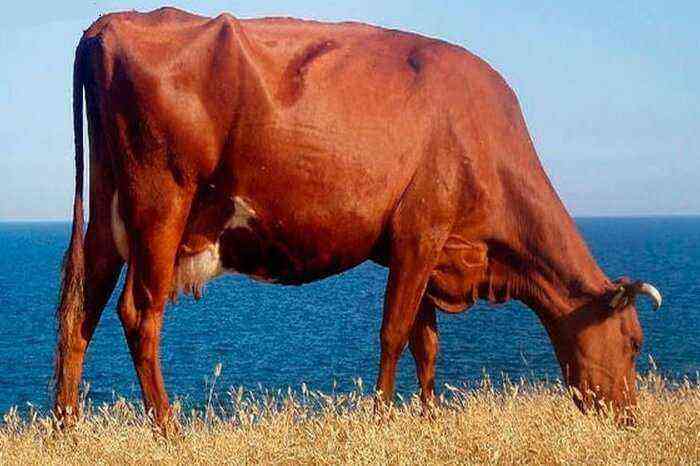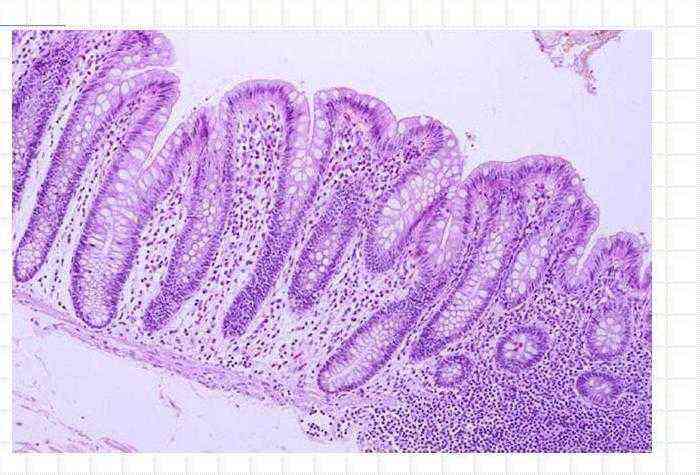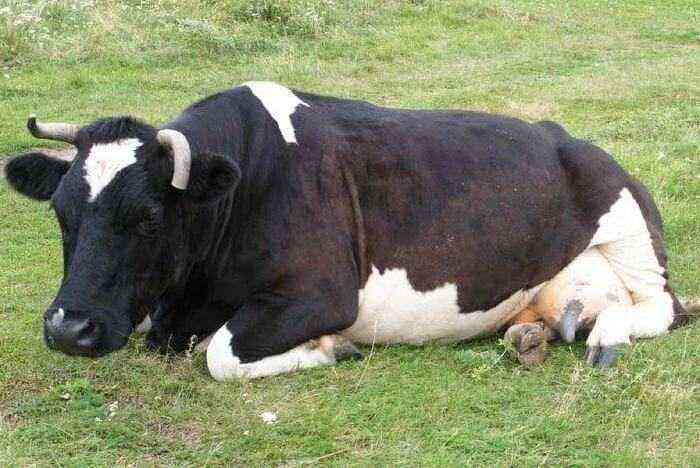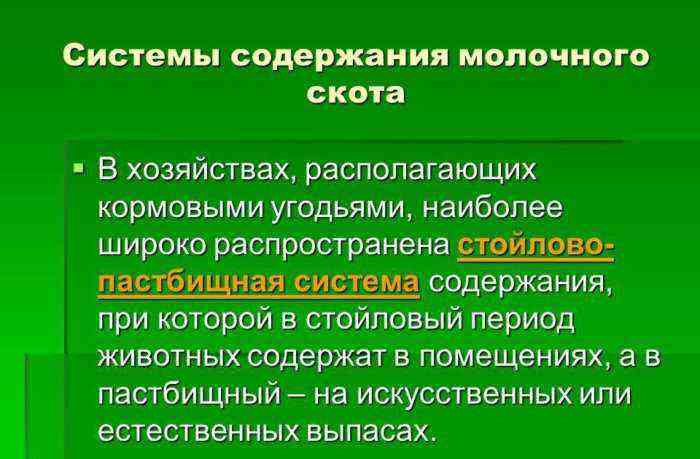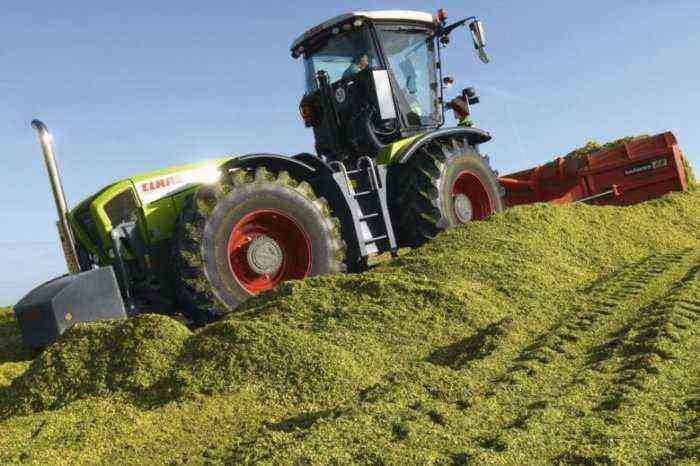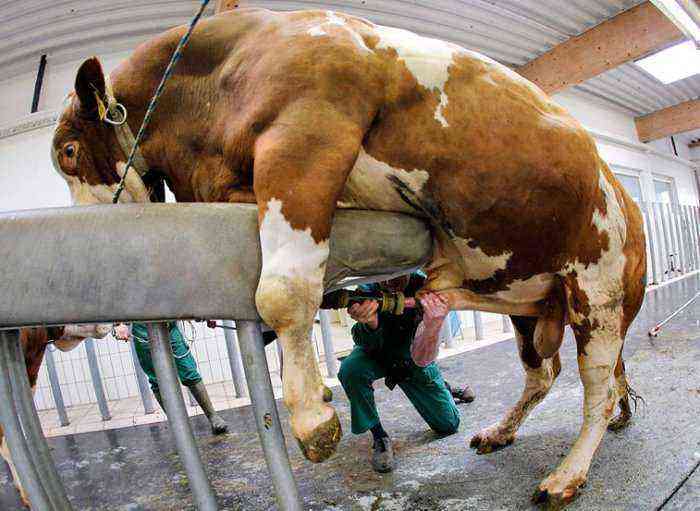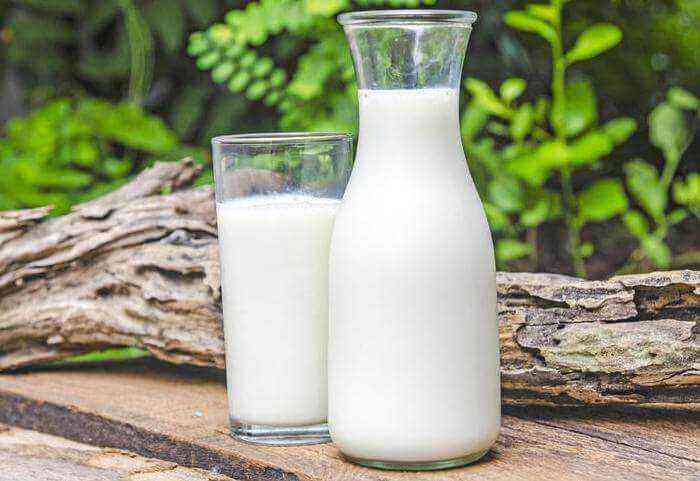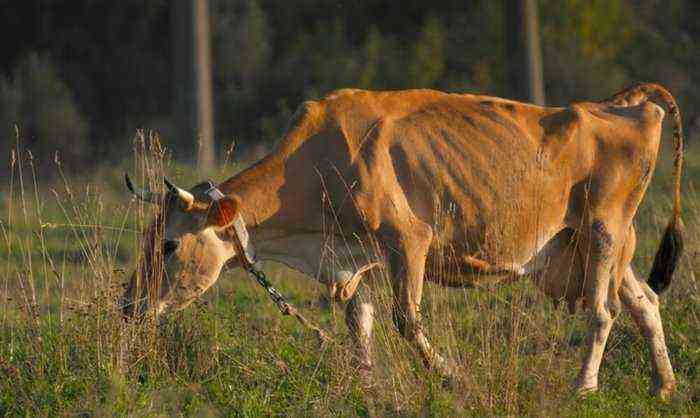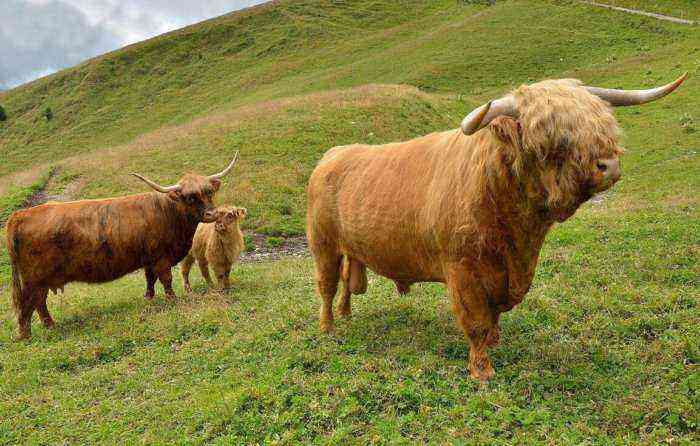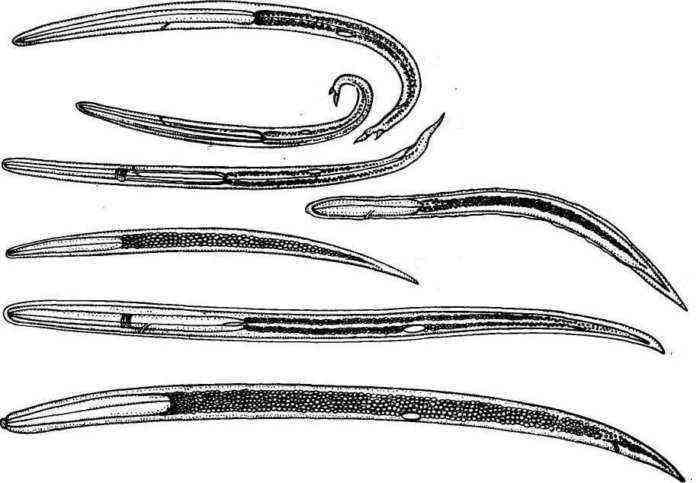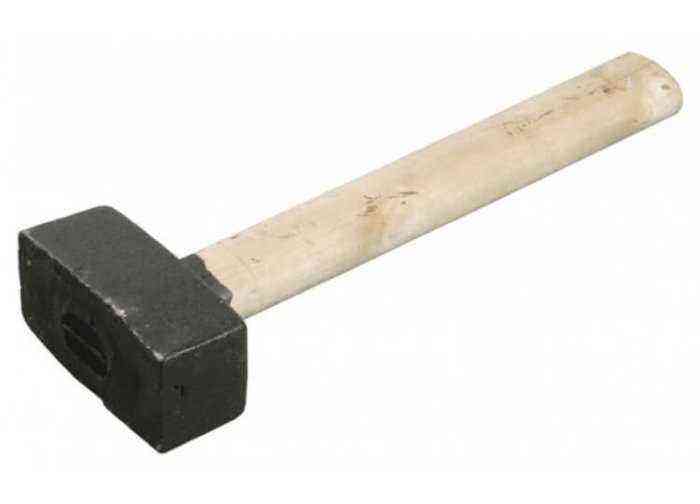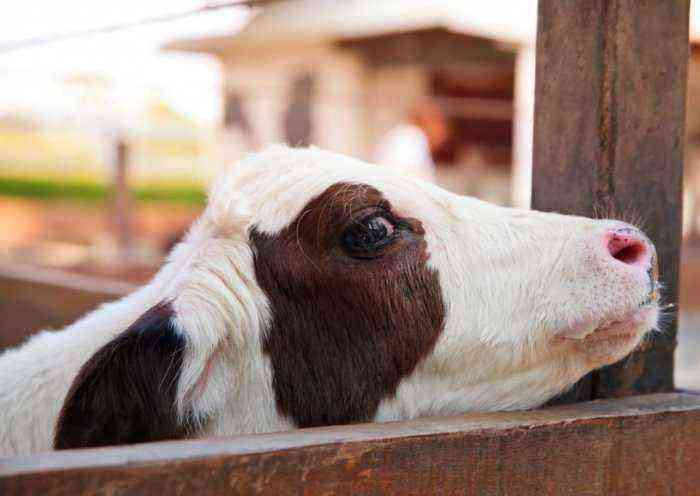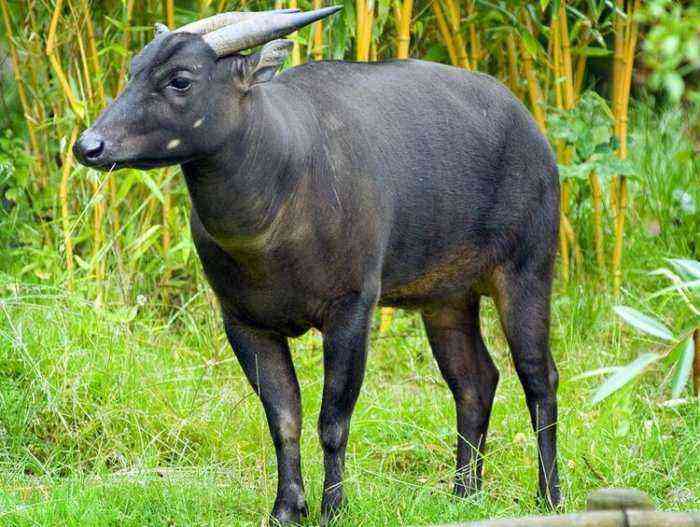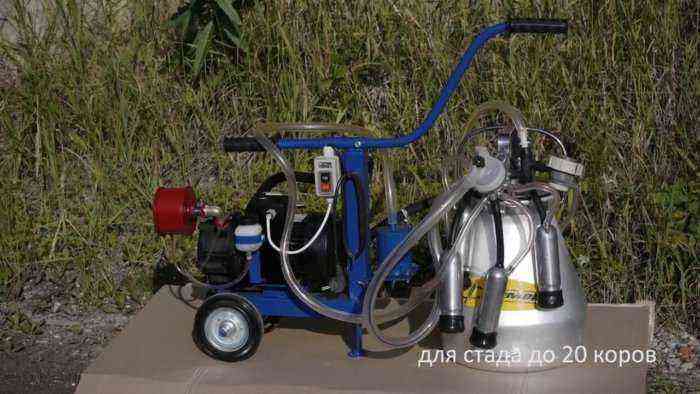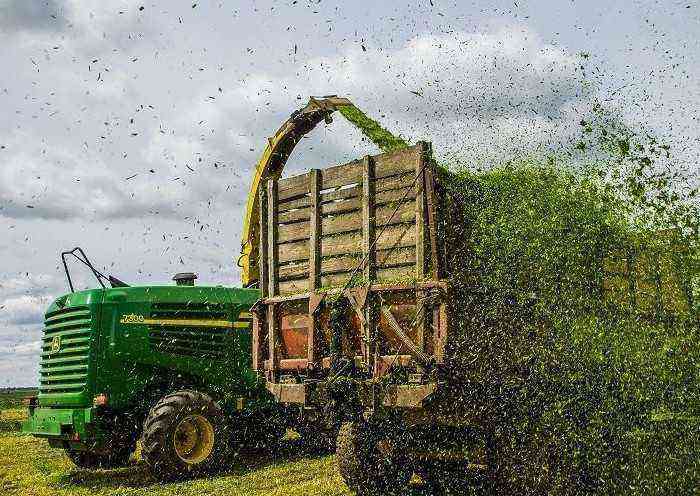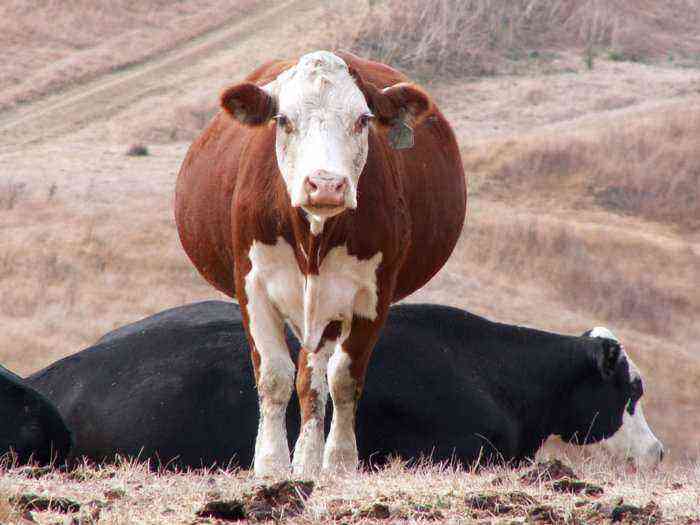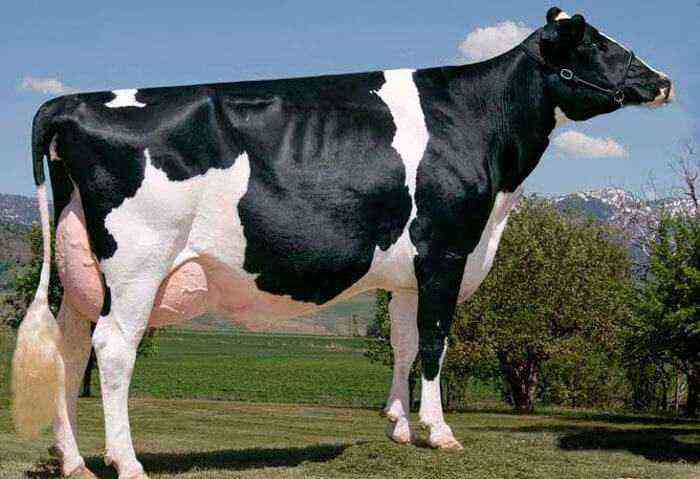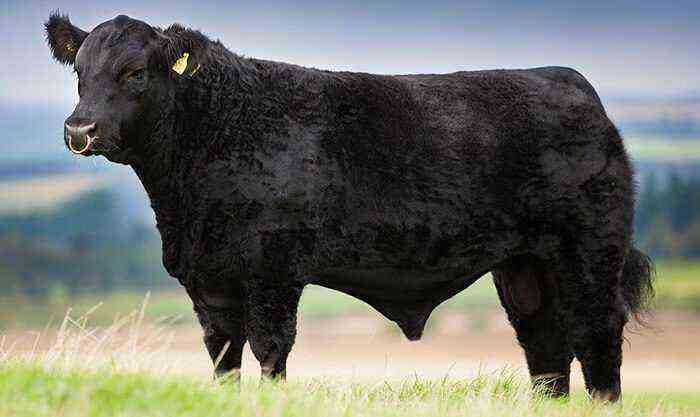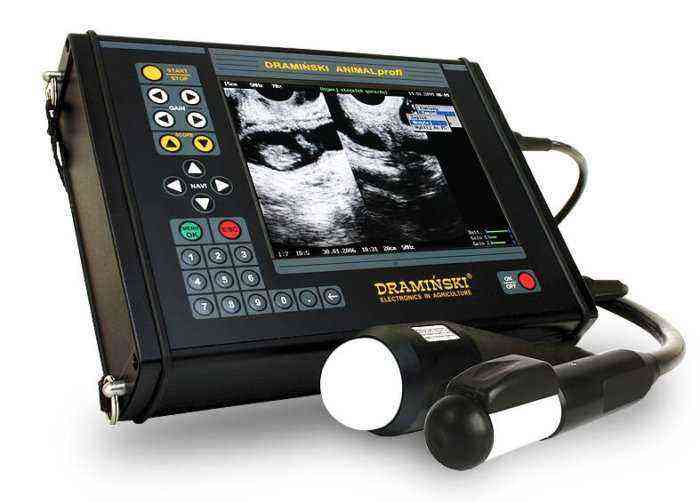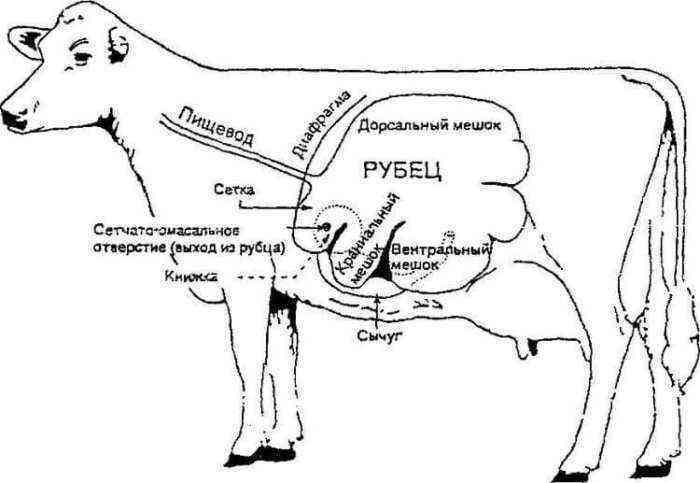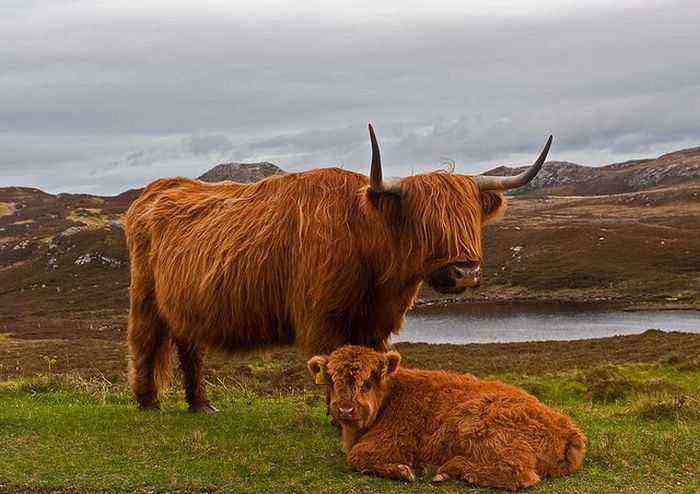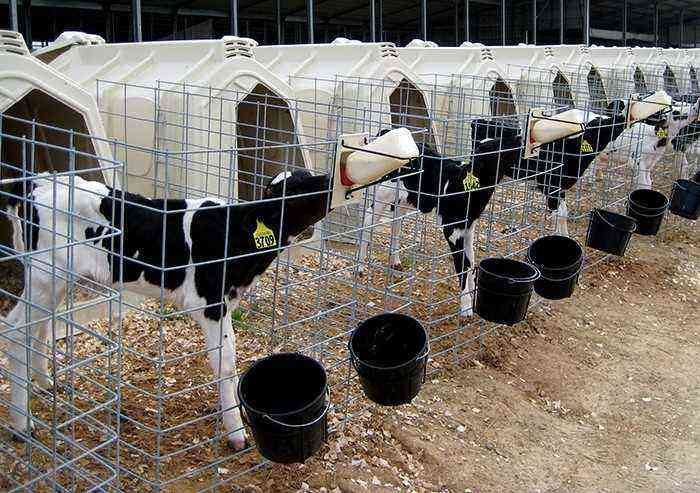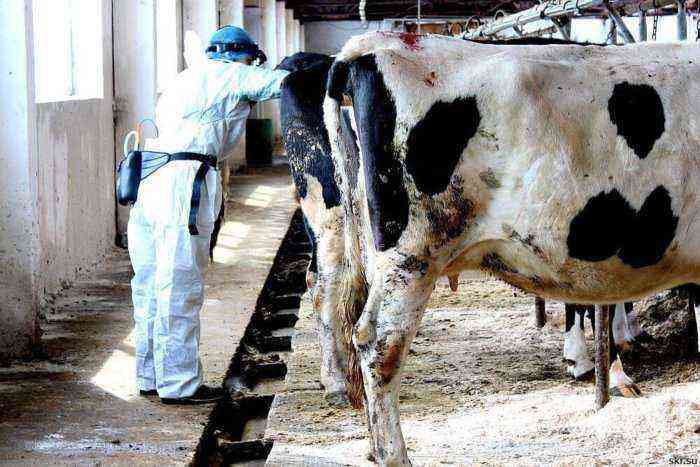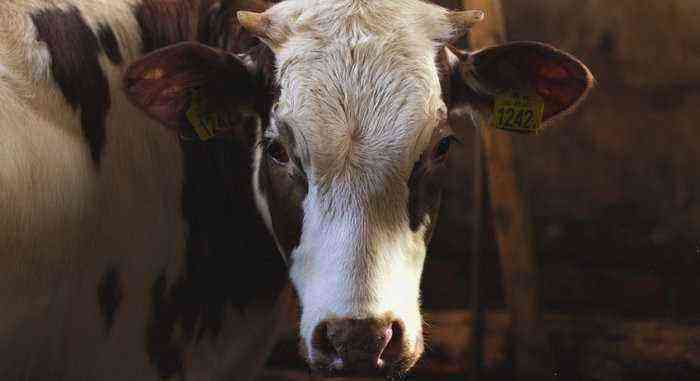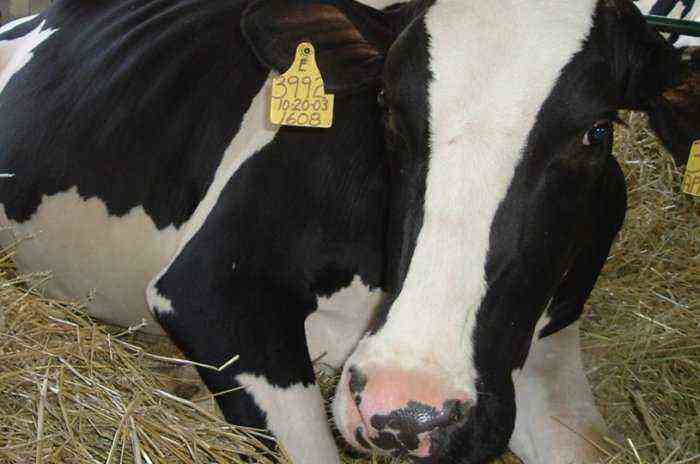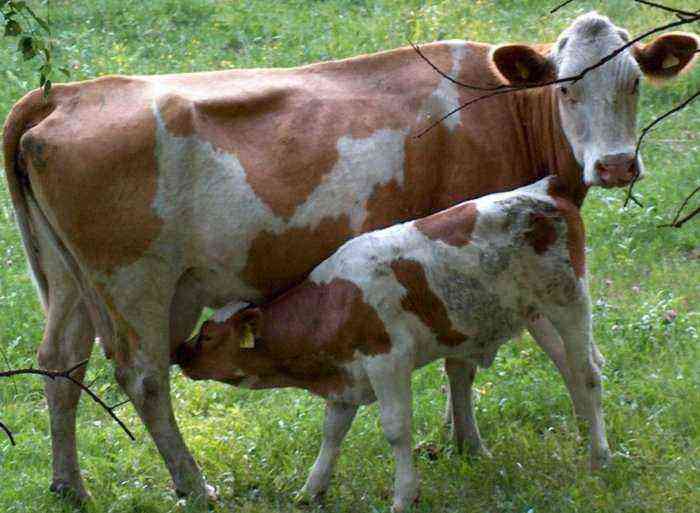Properly selected feeders and drinkers for cattle provide not only comfort for cattle during feeding, but also ease of care for them. Therefore, it will be useful for the breeder to find out what types of feeders are and how to choose the most appropriate option.
Feeding cattle
Types of feeders
There are many different types of such products. Among themselves, they differ in the type of construction, features of application, purpose. Also, the material of manufacture may differ in different models. Some modern feeders and drinkers are made from durable but lightweight polymer materials. Others are made of stainless steel.
But the broadest criterion in the classification of containers for feeding cattle is the method of keeping cows. In accordance with it, products are allocated for use on pastures and in stalls.
Feeder in the pasture
As the name implies, this type of feed container is mounted directly on the grazing site of the herd. They are used to provide animals with the selected type of feeding, which helps to increase productivity. This purpose implies a number of requirements that are put forward when choosing a model. She must be:
- capacious;
- reliable;
- easy to maintain;
- eliminating unnecessary loss of feed.
In addition, if such a feeder is installed at a distance from the farm, it should require as little maintenance as possible.
Feeder for cows in the pasture
In general, all pasture variants can be divided according to the type of forage.
For concentrates and compound feeds
For food of this kind, automatic feeders with a hopper are best suited. It has an elongated rectangular shape, and the grain is fed into it from a large container without the participation of the owner. Its main advantages are the minimum loss of feed, as well as ease of maintenance.
When cattle of different age groups are kept together, there is a risk that adults will eat all the grain. Therefore, it is better to install a calf feeder separately, and it must be equipped with special iron bars, the distances between which will be calculated exclusively for young animals.
As the simplest option for compound feed and grain, special long troughs (preferably plastic) are suitable. Often they are equipped with special separator bars that prevent conflicts between cows.
For hay and dry fodder
Such food, as a rule, is fed to livestock in the autumn, when there is no longer enough green grass for animals. Many breeders in this case prefer to lay the hay in bunches directly on the ground. This approach is irrational because of the large losses of food, which is gradually trampled into the ground.
In this case, a cylindrical feeder designed for hay will be optimal. In it, the lower part is made with solid walls, and the upper half is a lattice with vertical bars, between which the cow can easily stick her head. Cattle can easily get food from such a cylinder, but cannot trample it.
Also, standard horizontal cells are no less often used, which in cross section look like a semicircle or an inverted triangle. As a rule, such products are supplemented with stable legs, which prevent the impact of dampness on the feed and make feeding livestock more comfortable.
Feeding cattle with hay
Feeder in the stall
As feeders for the stall, the so-called fodder tables are most often used. This format of the feeding container is a horizontal surface with legs. In a circle, it is limited by walls, the height of which can vary. Such walls exclude the ingress of manure into the feed and scattering of food during feeding.
Products are installed along the aisles, end-to-end with the wall of the stall. They are individual and group. If stall tethered keeping is practiced on the farm, then the cows themselves calmly and carefully eat food from the tables. If livestock is free to move around the barn, then it is better to equip the feeders with restrictive rods. Such gratings can be made with straight, inclined and automatic stops. The last option is the most functional, but it has a high cost.
Feed tables offer the following advantages:
- simplicity of design, which, if desired, can be assembled from improvised materials;
- the possibility of automatic feed supply using an auto-distributor;
- ease of maintenance of the product and cleaning of aisles.
Instruction for manufacturing
Many types of containers for cattle food can be made at home in order to save money. The main thing is to strictly adhere to the recommendations and the algorithm of actions. Moreover, the procedure is individual for each type of feeder.
Making a feeder for cattle
Feeder with folding walls
The product is best made from wood. This material is environmentally friendly, durable and the easiest to process. For the simplest construction of this plan, you will need oak or pine boards, wooden slats and woodworking tools. Before starting work, be sure to download from the Internet or make your own drawing of the future product. The optimal measurements for it will be as follows:
- bottom width – 0,45 m;
- width of the upper part – 0,8 m;
- the height of the opposite sides (inner and outer) is 0,3 m and 1 m.
The whole manufacturing process is as follows:
- Boards and slats are thoroughly cleaned before processing. After that, they are leveled with a grinder or sandpaper to remove all splinters and bumps.
- The prepared material is cut in accordance with the drawing.
- All parts are fastened together with self-tapping screws or nails, making sure that there are no sharp ends and corners.
- A neat semicircle is drawn on the inner side of the container, according to the shape of which a hole for the head and neck of the cow will be cut. It is made using a jigsaw. Sections are polished at the end of the work.
- From the prepared rails or steel bars, limiters are made that will prevent the spread of feed. The easiest way to install them is in the form of the letter “V” at the inner wall of the feeder. But a grille with a recess for the shape of the head will also work.
Attention! If you plan to use such a container for wet food, it is advisable to treat it with special waterproof compounds before use.
group feeder
The previous version of the livestock feeder is used only for feeding single individuals. But if the farm contains a large number of livestock, a group container for food is more suitable here.
Group feeder for cows
The preparatory moments here are the same as in the previous case. First you need to draw up a competent drawing of the project. It can also be easily found on the web. After studying it, you should prepare all the necessary material and tools. To work, the master will need:
- long metal pipes with a thickness of 1,9 cm and 1,3 cm;
- reinforcement with a thickness of 8 mm;
- Bulgarian;
- welding machine.
Another preliminary step is cutting pipes with a grinder in accordance with the drawing data. When they are ready, they proceed to the assembly, which is carried out in the following sequence:
- The frame of the product is formed from pipes with a diameter of 1,9 cm. To do this, in the form of a triangle, cut pieces of pipes 68 cm and 201 cm long are welded together.
- Further, the legs are attached to the resulting base using a welding machine. Their height should be about 35 cm.
- Between themselves, the legs are connected by a piece of pipe for greater strength.
- On the end sections of the frame, vertical racks in the shape of the letter “T” are welded.
- Further, with the help of long pipe sections, the base and tops of the two T-shaped racks are connected so that the sections of the three tubes form a triangle.
- The lower tube of the triangle is connected to the upper tube perpendicularly with welded reinforcement, which is fixed on the structure in increments of no more than 7 cm. This will prevent hay from falling out of the feeder.
- In order for such a product to last longer, it must be carefully painted at the end of work.
Drinker for cows
An abundant amount of clean water is no less important condition for the normal life and high productivity of an animal than a proper diet. Therefore, the choice of drinkers should also be approached with all responsibility.
Drinking bowls in the barn
A suitable option in this case would be a group drinker. It is made as follows:
- They take a polypropylene pipe with a large cross section and cut it into two identical halves in length.
- Supports are attached to the resulting gutter from below to prevent tipping.
- Plastic boards are fixed at the ends.
- All protrusions and irregularities are carefully polished.
Such a drinker is easy to clean, does not tip over, and is light in weight, which is extremely convenient when transporting to pastures or within the farm.
Of course, if you wish, you can get by with an ordinary deep bucket. But such a product has disadvantages. Firstly, the animal easily turns it over, which means that the owner will have to monitor the process of fluid intake. Secondly, the volume of the bucket is too small.
A complete cow feeder allows you to significantly simplify the care of the animal and more economically use and distribute feed reserves. But when choosing such structures, one should take into account the specifics of each type of product and compare it with the conditions of livestock. This will allow you to choose the most convenient equipment for feeding and avoid a number of problems in the future.
